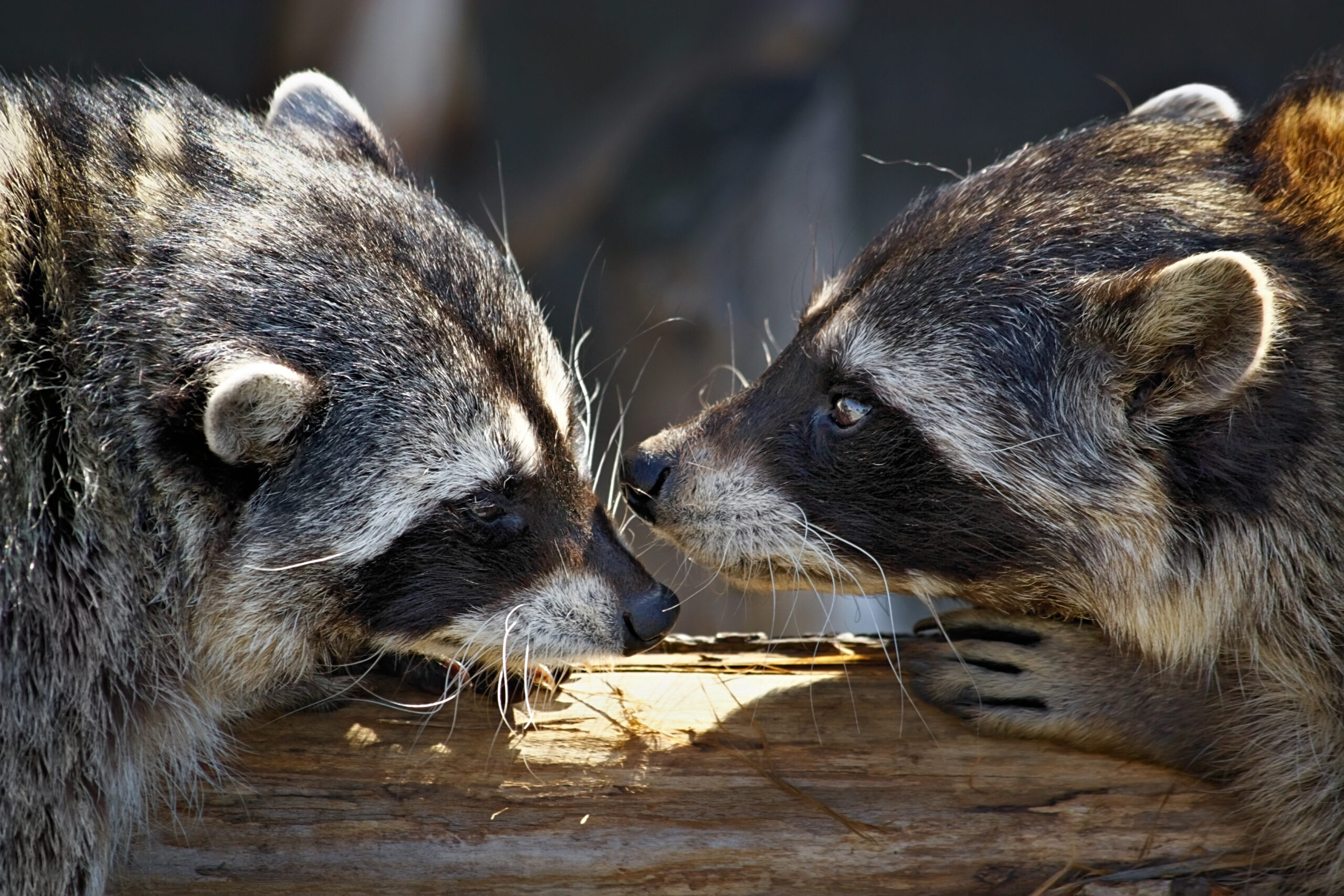
Did you know that it is now raccoon mating season?? I sure didn’t. Maybe you have been hearing raccoon fights in your backyard or alleyway. Aside from the raccoons in care at the wildlife centre, I have not seen a raccoon since last autumn. And now there are so many raccoons in care at the Centre that it’s getting tricky to find rooms and enclosures for them all. I asked the staff why we are getting so many raccoons right now. And that’s how I learned that it’s mating season.
Male raccoons are coming in to the Centre with wounds and abscesses on their backs from fights with other males. They really fight! Not just a show of aggression to scare away the other male. They scratch, bite, and apparently even bite-throw each other, as they fight for a female.
I would have never thought I’d be curious about the sex life of racoons, but it is Valentine’s Day and Family Day long weekend, after all…
Male raccoons are promiscuous. After mating, male raccoons sometimes stay with the females for up to a week before searching for another female. And the bigger a raccoon is, the more action he gets. The most dominant heaviest male will do 50-60% of the mating with the females within the group’s territory, says the Wildpro Electronic Encyclopaedia.
Female raccoons usually mate with only one male. They only have a small window of time – only three or four days per mating season when they can conceive. Raccoon Attic Guide says that “during the three to four days in which conception is on the table, raccoons will meet as a social group, foreplay and copulation being repeated during these nights, with sessions that last for about an hour. And while the strongest male will always get the chance to ensure the survival of its genes by copulating with more females… [he] can’t possibly mate with all the available females, the weaker males also eventually get the chance to breed. The urban female raccoon will give birth to an average of two to three litters during her lifetime.”
After gestation of about nine weeks, the female raccoon gives birth to three or four kits usually. The babies are born blind and deaf, but their face masks are fully recognizable. Their eyes and ears open at around three weeks, and by about 7 weeks old their eyes can focus. The kits remain in the den until they are 8-10 weeks old and will stay with their mother for a year or so. The mother raises her kits alone.
Mating season means injured raccoons coming in to the Toronto Wildlife Centre now, but it also means that it will be time for orphan and injured babies to come in starting around April and May.
According to PBS Raccoon Nation, in the wild a raccoon has a life expectancy of about 2 to 3 years, but in captivity a raccoon can live up to 20 years.
Fun fact I discovered (thanks to Wikipedia) while looking into raccoons: The word raccoon in English is based on an Algonquian (Powhatan) word meaning “he scratches with the hands.” Similarly, the Spanish word mapache is based on an Aztec word meaning “one who takes everything in its hands.” But in many other languages, the raccoon is called a wash bear: Waschbär (‘wash-bear’) in German, Huan Xiong (‘wash-bear’) in Chinese, dvivón róchetz (‘washing-bear’) in Hebrew, orsetto lavatore (‘little washer bear’) in Italian, and araiguma (‘washing-bear’) in Japanese.
